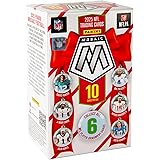
Did Penn State Shock the Nation or Fall Short Against No. 5 Oregon? The Surprising Verdict Revealed!
The stage was set for another epic clash under the bright lights of the annual White Out, where No. 2 Penn State faced off against No. 5 Oregon in a thrilling contest that kept fans on the edge of their seats—right up until the final whistle. Trailing 17-3 deep into the fourth quarter, the Nittany Lions mounted a gutsy comeback that pushed the game into double overtime. Yet, despite their valiant effort, Penn State couldn’t quite seal the deal, dropping a heartbreaker 30-24. This loss, unfolding amid the roars of a packed Beaver Stadium, only deepens the narrative that this program, loaded with talent and promise, still struggles to close the chapter on high-stakes games. Curious how the pieces fell into place, who shined and who stumbled? Here’s a breakdown of the key performances and areas that shaped this rollercoaster of a game.
No. 2 Penn State rallied back from down 17-3 in the fourth quarter to force overtime against No. 5 Oregon, but it ultimately wasn’t enough to prevail in the Nittany Lions‘ annual White Out game. Penn State fell 30-24 in double overtime, reinforcing the tired but substantiated claim that this program can’t win the big one.
Here is a look at this week’s postgame grades for the Nittany Lions.
Quarterback: C-

Drew Allar took fans on a roller coaster ride Saturday night. He was flat-out bad in some moments, namely the game-ending interception in double overtime and several missed throws on open passes over the middle. In other moments, he made the plays you’d expect a senior quarterback and former five-star recruit to make — a beautiful deep crosser to Devonte Ross for Penn State’s first touchdown, and some nice plays on scrambles and designed runs. He finished with 137 yards passing on 56% completion, two touchdowns and one pick.
Allar played his best in the fourth quarter and deserves some credit for leading the Nittany Lions’ comeback and touchdown drive in overtime, but you could argue it was his struggles that put Penn State in a hole in the first place, and it was certainly what cost the game in double overtime.
Running backs: C+

The running game was stuffed by Oregon for the first three quarters, which set up third-and-longs for a passing offense that was struggling. A big shift in the game was during Penn State’s first touchdown drive of the fourth quarter, when offensive coordinator Andy Kotelnicki began to ride the hot hand of Kaytron Allen. The blocking still wasn’t great, but Allen is at his best when he’s running through tackles and moving the pile. He finished with 54 yards and a touchdown on 4.5 yards per carry.
Nicholas Singleton was much less efficient, only picking up 21 yards on 11 carries. He didn’t play poorly, but he didn’t create the extra yards the same way that Allen did. To his credit, Singleton did make some plays as a receiver with three catches for 29 yards. His role as a third-down back shouldn’t change, but it’ll be interesting to see if Allen begins to get more touches than Singleton moving forward.
Wide receivers and tight ends: C

Of course, the passing game struggling isn’t only on Allar. Oregon’s defense did a great job in pass coverage, and Allar’s inaccuracy kept Penn State from capitalizing when receivers actually did get open. Devonte Ross ended up having the biggest game with 48 yards and two touchdowns. He’s this offense’s best deep threat, and he needs to get more targets down the field to force opposing defenses to respect him. I’m also a fan of Trebor Peña’s usage on reverses and sweeps, and it also opens up the traditional running game when defenses have to account for Peña as the motion man. Kyron Hudson had a goose egg in the box score on Saturday, which has to be dissappointing for Penn State fans who thought these transfer receivers were going to help fix this passing game.
Tight ends Khalil Dinkins and Luke Reynolds combined for three receptions, although it could’ve been more with some better throws. You’d like to see them come through as security blankets more often, but it wasn’t a bad game for the tight ends.
Defense: A

The defense put the team on its back during regulation with its bend, don’t break style. Oregon controlled the time of possession during the first three quarters, and you could see Penn State’s defense was gassed, but they just kept getting after it. Linebacker Amare Campbell looked elite with a team-leading 15 tackles, and safety Zakee Wheatley and cornerback A.J. Harris pitched in with some great open-field tackling from the secondary.
The biggest area to improve on is the pass rush, which failed to get a single sack and only registered two quarterback hits against Dante Moore. Moore generally had a clean pocket, which allowed him to hit his receivers in space or scramble when they were covered well. Credit goes to the Oregon offensive line, even if there were missed holding calls that benefited them. Nonetheless, the defense certainly can’t be blamed for this loss. Yes, it allowed two touchdowns in overtime, but it also held them to 17 points in regulation and are the only reason it got to overtime.
Special teams: A

There’s not a lot to say about the special teams, other than that kicker Ryan Barker tied his career long with a 49-yard field goal that had plenty of leg. Punter Gabe Nwosu faired well on his five boots, downing one inside the 20-yard line. There was only one returnable punt, where Devonte Ross didn’t have room to run. Not a super impactful game, but the special teams definitely did their job.
Coaching: B

I think this was a pretty well-called game actually, and I can’t blame the coaching staff for the overtime loss. I was a fan of Penn State’s aggressiveness on fourth downs, but I wasn’t a fan of all the third-down play calls. One troublesome sequence was on the first drive of the third quarter: On third-and-9 from the Oregon 36-yard line, Penn State ran an option play where Allar faked the pitch and kept it for no gain. Then, Penn State punted for a touchback rather than attempt a 53-yard field goal. I understand coaches like to run the ball on third down to make the fourth down more managable, but to me, a third-and-9 run means you don’t trust your quarterback to throw the ball downfield, which is also probably why they didn’t just go for it on fourth-and-9.
I was a fan of the play-calling and urgency during the fourth-quarter comeback, especially some of the touch passes and jet sweeps to the wide receivers and the run-pass balance. It makes you wonder why the offense started out so sluggishly again. Normally, teams script their first 10-20 plays, and Penn State had two weeks to put that together, yet Penn State’s offense has done its best during those no-huddle, off-script situations. Regardless, this offense has to figure out how to be consistent, and that’s a coaching and player issue.
Overall: C
The box score will say this was a close overtime defeat, but Penn State was dominated for three quarters before finally showing life and forcing overtime. The whole experience felt like deja vu to the previous losses to Ohio State and Notre Dame, and it’s hard to understand why. This team has returned key veterans, had one of the best transfer classes in the country, but it still can’t play a convincing game against top-10 teams. This loss won’t hurt Penn State in the top 25 rankings, but it deals a big blow to its confidence.
Penn State will hit the road for the first time this season next Saturday against UCLA. Kickoff is set for 3:30 p.m. EST and will air on CBS.































Post Comment